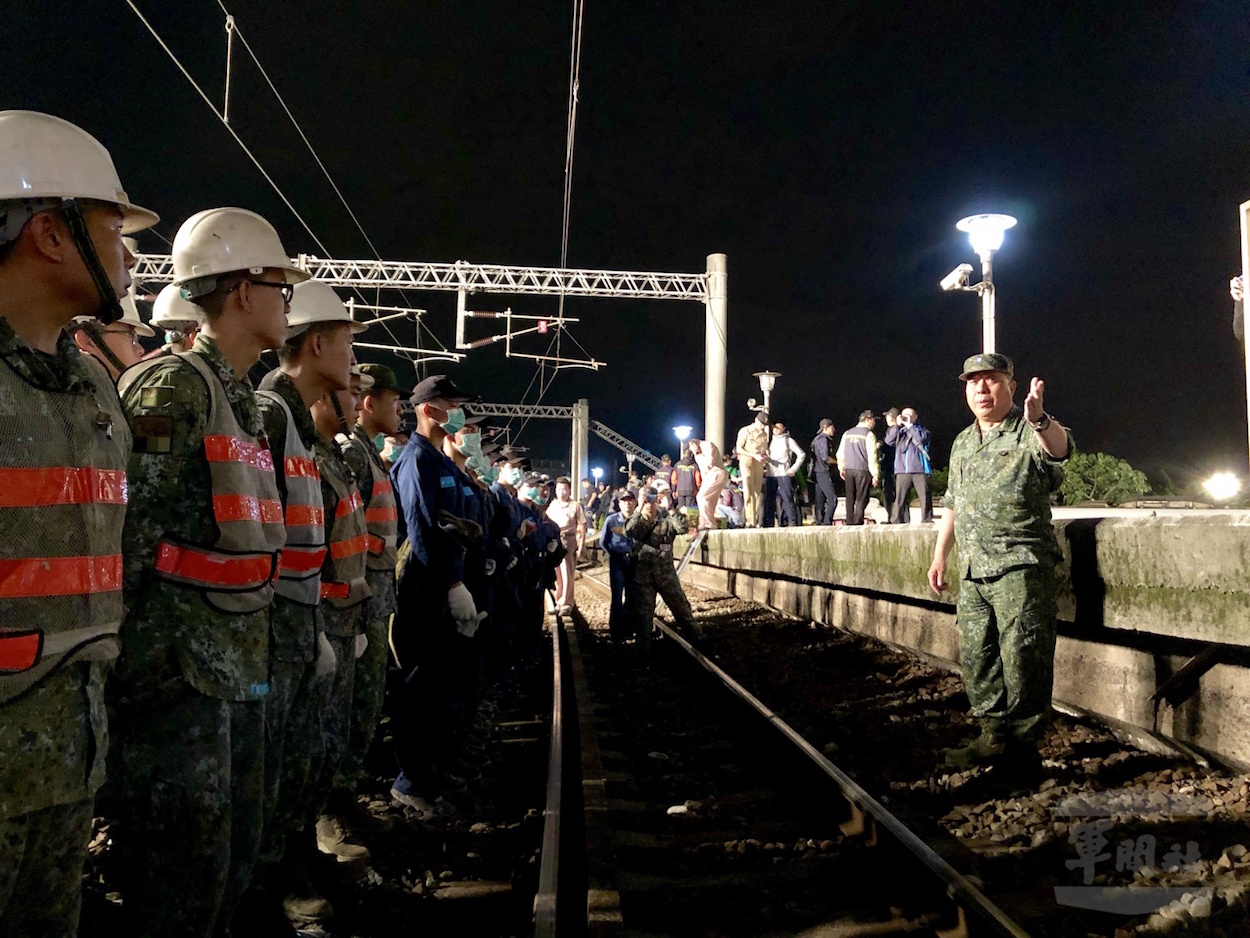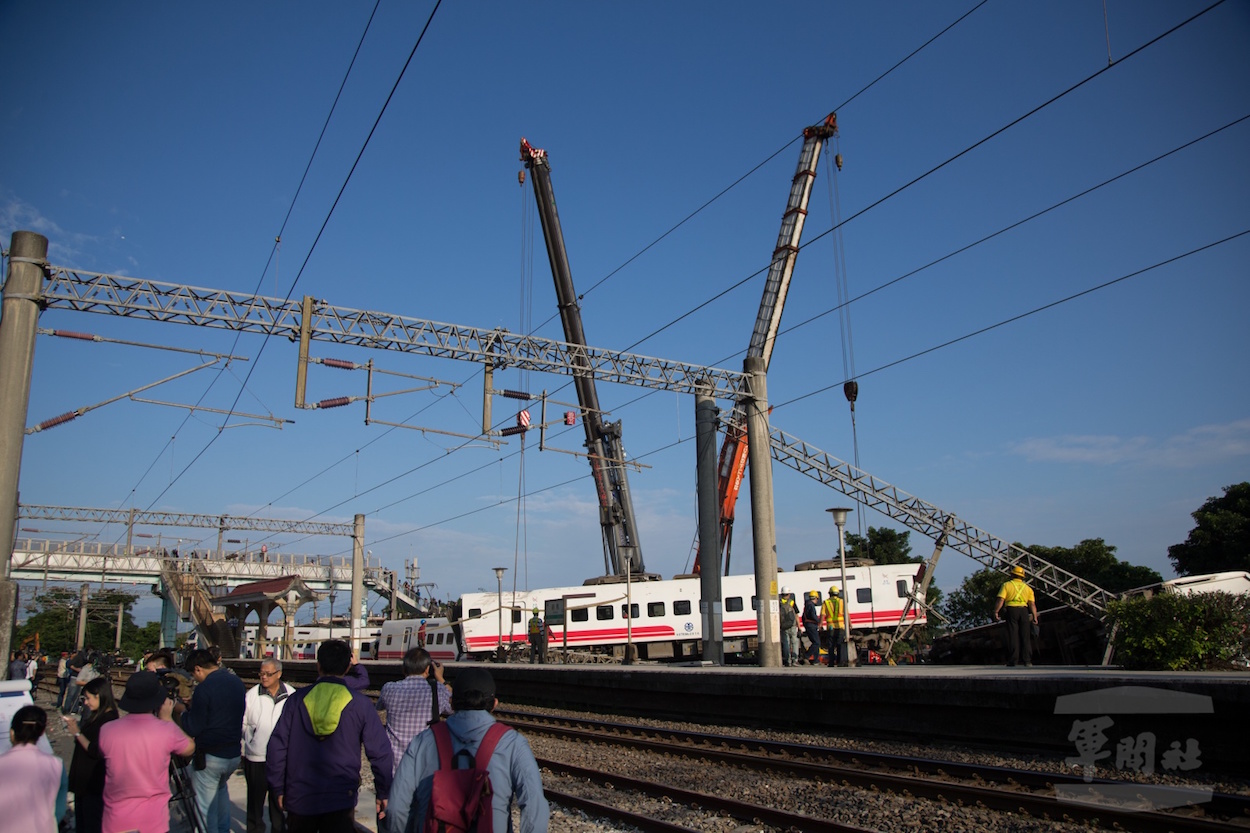by Brian Hioe
語言:
English
Photo Credit: Military News Agency/WikiCommons/CC
TAIWAN SAW ITS worst rail accident in decades over the weekend, with the derailment of the Puyuma Express No. 6432 at 4:50 PM on Sunday in Yilan. The train was traveling from Shulin in New Taipei city to Taitung, derailing near Sinma in Yilan. 18 were killed, with almost 200 injured. The train was carrying 366 passengers, with deaths primarily occurring in the first car, which flipped over during the accident.
This was Taiwan’s worst rail accident since 1981, in which 30 were killed in a train crash that also injured 130. All train cars derailed and five were overturned. The cause of the train derailment is still under investigation, but it is currently believed that safety mechanisms from the train may have been disabled by conductor You Zhen-zhong, who has been released on bail but is currently under investigation. Previous speculation in Taiwanese news focused on the possibility that faulty parts from Japan may have led to the disaster. The train had been in use since 2011 and had been maintained earlier this year. However, the train was found to be moving at 150 kilometers per hour through track in which the speed limit was 74 kilometers per hour.
 Rescue workers after the derailment. Photo credit: Military News Agency
Rescue workers after the derailment. Photo credit: Military News Agency
Relevant government ministries have maintained that emergency responses in Yilan were adequate, with victims sent to Yilan, Hualien, Taitung, and Taipei. The Taiwan Railways Administration has offered 100,000 NT in comfort fees to families of the bereaved and 5,000 NT to those who were injured. Families of the deceased will be compensated up to 5 million NTD, those injured seriously will be compensated up to 2.4 million NTD, and those with minor injuries will be compensated up to 60,000 NTD.
Train services resumed at 5:12 AM on Monday morning, with trains moving slowly through the tracks where the derailing occurred. For a full investigation to take place will take time, given damage to the track where the derailing took place and surrounding equipment.
The principle of innocent until proven guilty may be worth applying here regarding those involved in the events which led to the rail accident. Nevertheless, one notes that the accident resembles a number of other transportation disasters which have taken place in Taiwan in past years as a product of poorly maintained equipment or actions by vehicle operators. Incidents of poor maintenance by vehicle operators seeking to cut costs have been one contributing factor, as has been error by vehicle operators. Sometimes, vehicle operators may have been inadequately trained by their companies. In other cases, they may be working overtime, contributing to exhaustion that leads to accidents, forced to comply with tight schedules by their bosses, leading to speeding and other behavior, or may themselves inadequately carry out safety checks because of the schedules they are forced to maintain.
Similar incidents in past years include the death of 43 in February 2015 as a result of the crash of TransAsia Airways Flight 235 into the Keelung River, which had been preceded by the crash of TransAsia Airways Flight 222 in July 2014, killing 48. Other comparable incidents would be the death of 26 in Taoyuan after a bus driver deliberately crashed the bus, which he had stocked with gasoline tanks beforehand, a case of murder-suicide that some saw as aggravated by the long hours that bus drivers are made to work in Taiwan and the tight schedules they are made to keep, as well as a 2017 bus accident that killed 33 after the bus flipped over. This latter incident was one of Taiwan’s worst road accidents in decades and was seen as a product of that the driver had been made to work long hours for the Lunar New Year without rest.
 Photo credit: Military News Agency/WikiCommons/CC
Photo credit: Military News Agency/WikiCommons/CC
Despite the obvious fact that overworked vehicle operators contribute to accidents resulting in fatalities, the public transportation industry in Taiwan continues to overwork its workers. This may be a shared factor between the Yilan train derailing and other incidents in the transportation industries, such as those which have occurred to buses and airplanes in recent years.
However, it remains to be seen if the tragedy of last Sunday’s rail accident will lead to reforms for public transportation workers and vehicle operators, or whether there will be much finger-pointing among relevant government agencies and the TRA, but that this will not lead to any changes. The response of the transportation industry to changes to the Labor Standards Act pushed for by the Tsai administration last year, widely seen as undoing thirty years of labor reforms in Taiwan, was generally to try and force its existing workers to work longer hours instead of hiring new workers. And so, given the lack of importance placed upon passenger or worker safety by the Taiwanese transportation industry, one is not optimistic that such reforms will take place.

